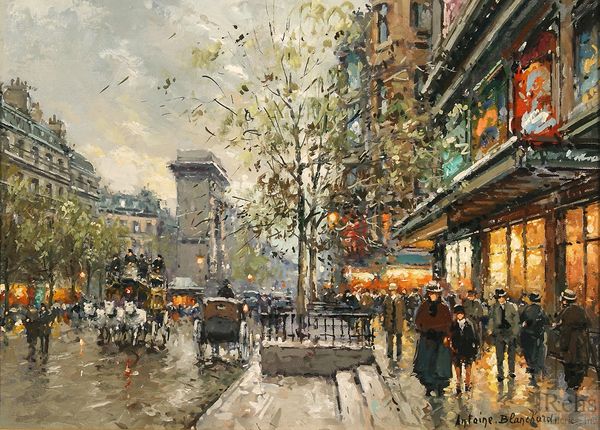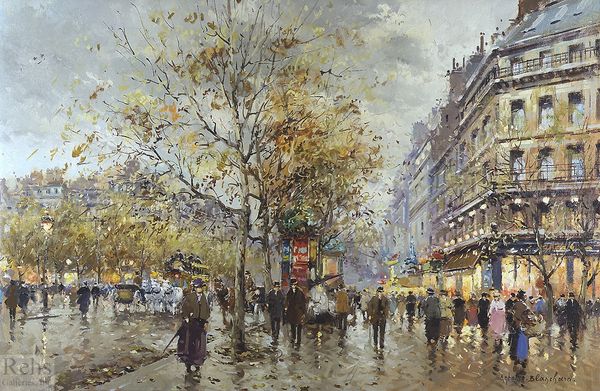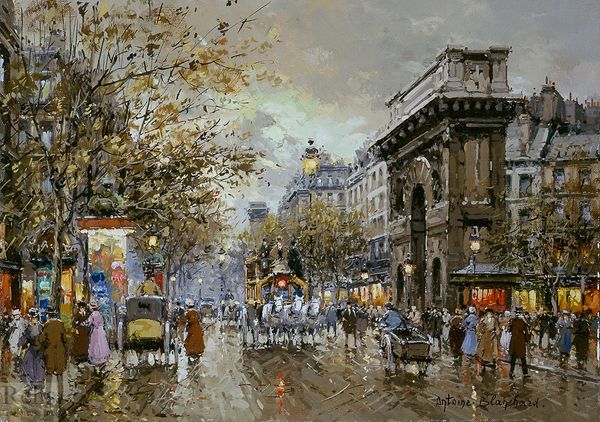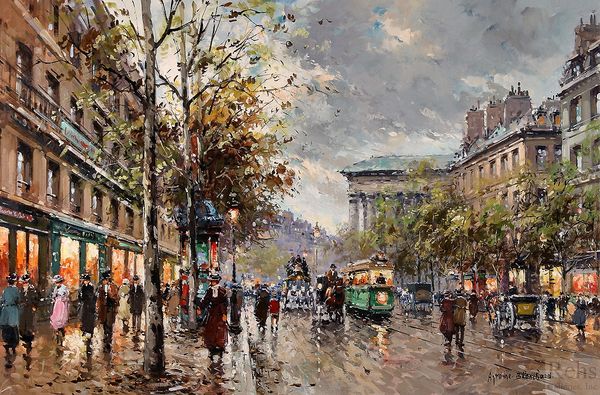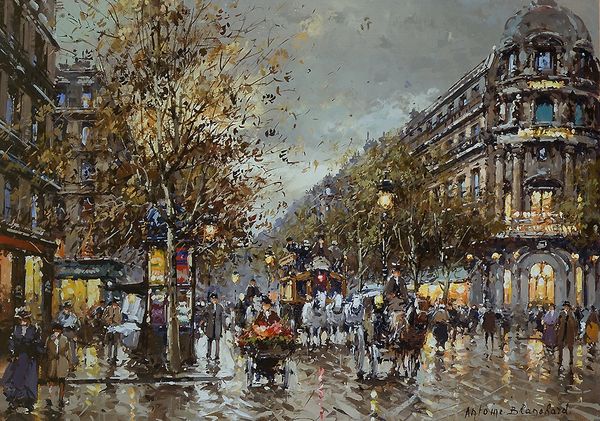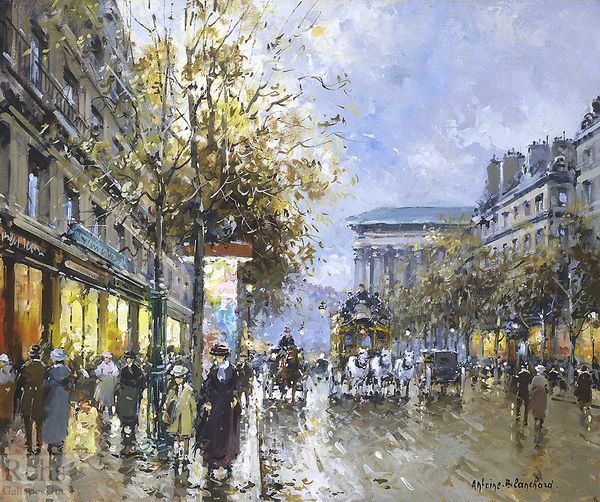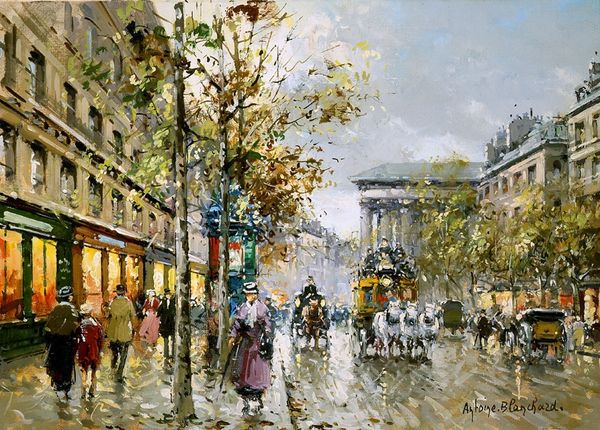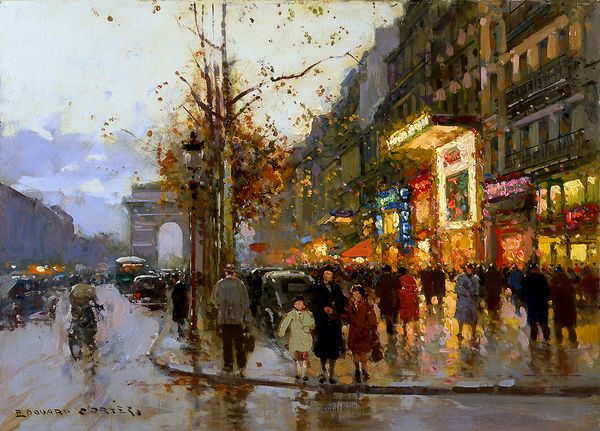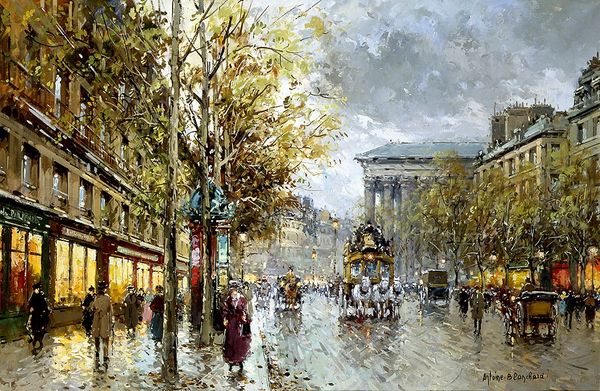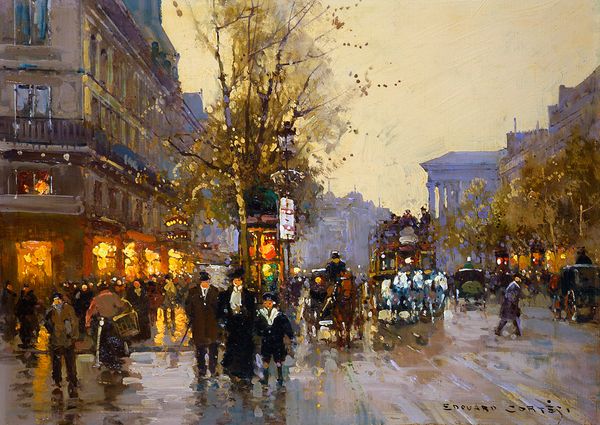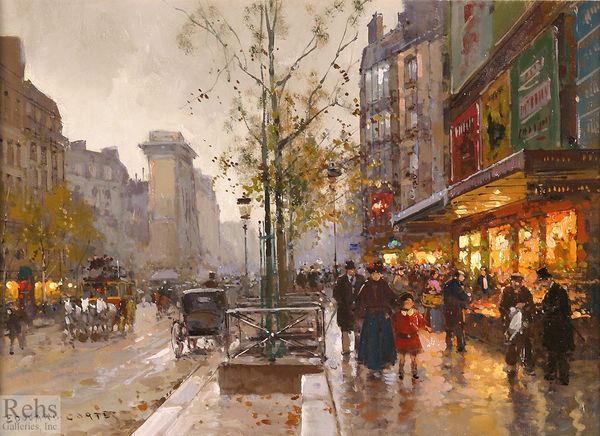
plein-air, oil-paint
#
portrait
#
baroque
#
impressionism
#
caricature
#
plein-air
#
oil-paint
#
appropriation
#
landscape
#
figuration
#
oil painting
#
city scape
#
fluid art
#
romanticism
#
cityscape
#
genre-painting
#
street
Copyright: Antoine Blanchard,Fair Use
Curator: Immediately, one notes the subdued tones – mostly greys and browns – conveying a definite somber mood in Antoine Blanchard's "Porte St. Denis". The composition is dominated by verticals and horizontals, contributing to a sense of order, but what do you make of it, from a more... grounded perspective? Editor: It certainly looks like a postcard, one for the tourists. The material rendering aims for a certain authenticity through plein-air techniques, yet it romanticizes Parisian life, glossing over any true understanding of the materials and processes that enable the infrastructure. How can we reconcile Blanchard's attempt to represent everyday life with the reality of artistic labor, and, dare I say, class? Curator: The very act of selection is key here. Note how Blanchard frames the Porte St. Denis. The arch, usually a symbol of triumphalism and power, is rendered almost incidental, dwarfed by the quotidian. Is this subversion deliberate, or a mere aesthetic choice? Editor: Well, aesthetic choices are never ‘mere,’ are they? Blanchard's work relies on a complex system of oil paint and brushstrokes to reify an upper-middle-class worldview onto the Porte St. Denis, yet doesn't critically explore what goes into the architectural object. What interests me are the raw materials—the stone he replicates, how that stone was quarried and transported—questions that unveil more than a painted surface can offer. The people—their social class is merely alluded to, not made plain, for example through their clothing. It is almost staged; you do not catch anyone sweating or looking particularly unhappy despite the gloomy sky. Curator: Precisely. We’re presented with a picturesque scene—clean, safe, even inviting despite the lack of sun. It omits aspects that would perhaps disturb this idyllic representation of Paris; that relates strongly to the market demand for such scenes. Yet through that distillation process, meaning is subtly created, a statement about the relationship between power, the everyday, and the aesthetic consumption thereof. Editor: Perhaps. But by focusing on this romantic, pictorial rendering of daily Parisian life, Blanchard unwittingly, or not, obscures more complex relationships. While this offers visual appeal, I always feel like that appeal is, to use another term, only skin-deep. Curator: An incisive way to put it, revealing both the limitations and the quiet strengths of the piece. Editor: Indeed. Always a question of weighing material truths versus idealistic interpretations.
Comments
No comments
Be the first to comment and join the conversation on the ultimate creative platform.
